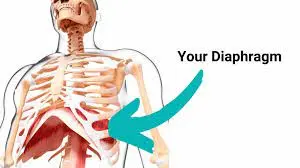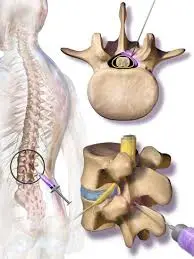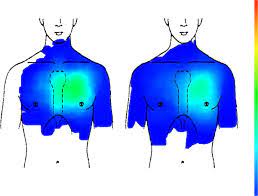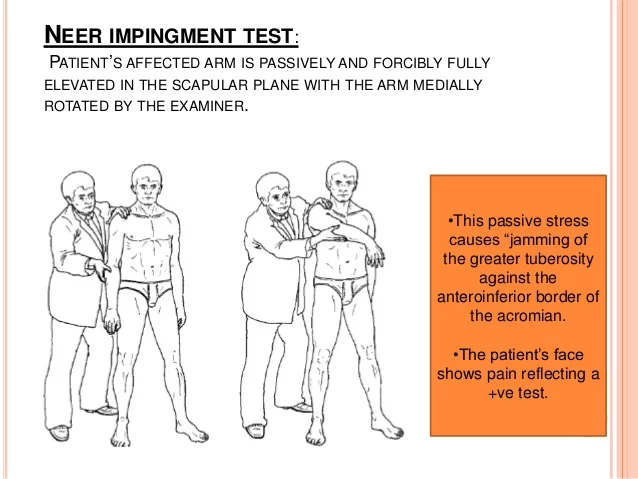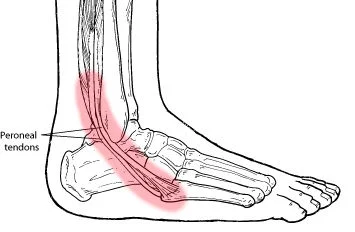Diaphragm Muscle Pain
Diaphragm muscle pain, also known as diaphragm spasms or diaphragm cramps, can occur due to various factors, leading to discomfort and potentially impacting breathing and overall well-being.
The diaphragm is a dome-shaped muscle that plays a vital role in the respiratory system, facilitating breathing by contracting and relaxing to allow air in and out of the lungs. It separates the thoracic cavity, where the lungs are located, from the abdominal cavity, where various organs reside.
Table of Contents
Anatomy of Diaphragm Muscle
The sternum (breastbone), inferior border of the ribs (at the sixth rib level), and lumbar vertebra of the spine are where the diaphragm muscles start. Between the thoracic and abdominal chambers, a hole in the centre of the diaphragm allows passage of organs like the oesophagus, descending aorta, and vena cava vein. This hole also allows for the passage of nerves like the phrenic and vagus nerves.
With its contractions during inhalation, the diaphragm essentially creates the thoracic cavity’s floor, pulling it down into the abdominal cavity and enabling the thoracic chamber to enlarge and deepen as it pulls air from the environment.
The diaphragm’s role enables a number of crucial motions for several expulsive acts. Coughing, sneezing, vomiting, and even passing faeces are examples of these. Additionally, it’s thought that a diaphragmatic spasm brought on by breathing in the air might cause hiccups to develop.
What is Diaphragm Pain?
Your lower-to-middle rib cage contains a mushroom-shaped muscle called the diaphragm. It divides your thoracic region from your abdomen.
The muscle that divides the chest from the belly, the diaphragm, can become painful for a variety of causes, including an injury, pregnancy, and pneumonia.
In order for the lungs to fill with air during inhalation, the diaphragm descends. Then, as you exhale, it rises once again, emptying your lungs.
Though it is often conceivable that the pain is originating from another, adjacent body region, people may occasionally feel pain or discomfort in their diaphragm.
We go through the most frequent causes of diaphragm discomfort in this post, along with remedies.
When you inhale, your diaphragm lowers, allowing your lungs to expand and aiding in breathing. It rises to its starting position as you exhale.
Your diaphragm goes through quick, rhythmic spasms when you get the hiccups.
However, a person’s diaphragm might occasionally hurt beyond the brief spasms brought on by hiccups.
Diaphragm muscle discomfort is a frequent consequence following surgery and can be a sign of a wide range of medical conditions. However, the cause of diaphragm discomfort is frequently unknown.
Causes of Diaphragm muscle pain
Diaphragm discomfort frequently manifests as an extra symptom of an underlying illness, making it challenging to identify without the help of a medical practitioner. While pain experienced during inhalation may be more frequently the result of issues with the abdominal muscles, the discomfort experienced during exhale may suggest diaphragmatic distress. Sharp or sewing sensations are common diaphragm muscle strain symptoms. The following illnesses may contribute to diaphragm discomfort.
- Anatomical defects:
Congenital:
Appear at birth, with unknown origins accounting for the bulk of instances.
Acquired:
Appear following particular traumas or injuries. This comprises injuries that were inadvertently brought on by doctors during operations (iatrogenic) and developing as a post-operative consequence. Sometimes, the cause of diaphragm discomfort (idiopathic) is unknown.
- Defects in innervation causing diaphragmatic discomfort
Spinal cord disorders: These conditions include spinal trauma, ALS, and motor neuron disease.
Myasthenia gravis An autoimmune illness characterized by skeletal muscular weakening, particularly in the respiratory muscles, which impairs breathing ability.
Stroke: One side of the diaphragm muscle may become paralyzed, forcing the unaffected side to work more hard and finally resulting in the development of diaphragmatic discomfort.
Neuropathy: The diaphragm is directly innervated by the phrenic nerve, which has neuropathy. Severe diaphragmatic discomfort may result from surgical damage to the phrenic nerve or other causes.
Other factors contributing to diaphragmatic discomfort include:
- Skeletal dystrophy
- Rheumatoid Arthritis
- Poliomyelitis
- Thyroid conditions
- Malnutrition
- Radiation treatment
- Infection Trauma
- Ineffective breathing technique
- Chiropractic adjustment
Diaphragm discomfort, or pain that feels similar to it, can have a variety of reasons, including:
- Injury
A layer of muscle in the chest is the diaphragm.
The diaphragm may get damaged by surgical treatment or a strong impact. Pain that results may come and go or be ongoing.
The diaphragm muscle can be torn by several trauma types. The diagnosis of a ruptured diaphragm, a serious ailment, can be made with a CT scan or thoracoscopy.
These signs include:
- Abdomen ache
- Breathing problems
- Shoulder or chest discomfort
- Heart palpitations when coughing
- Nausea
- Vomiting
Because the diaphragm is always moving due to continuous breathing, a rip cannot mend on its own. Therefore, surgery is required to restore the muscle.
2. Skeletal muscle issues
Trauma, twisting motions, and a lot of coughing can all strain the rib muscles, which can result in discomfort that feels like it’s coming from the diaphragm. Broken rib pain might also feel similar to diaphragm discomfort.
- OTC analgesics such as naproxen (Aleve) and ibuprofen (Advil)
- Cold therapy for the first 72 hours is some treatment and after the first 72 hours, heat therapy
- Breathing exercise
- Physical exercise
In general, fractured or broken ribs will heal on their own in 6 weeks, however, the following remedies may help with discomfort in the interim:
- Resting
- Staying away from taxing activities
- Utilizing ice treatment and over-the-counter painkillers
- Cutting anaesthetic injections around the ribs’ nerves
- Practicing breathing techniques
Compression wraps were once often used to treat fractured ribs, but they can prevent deep breathing and raise the risk of pneumonia. Consequently, doctors no longer endorse them.
- Vigorous exercise: Hard breathing when engaging in vigorous exercise can cause the diaphragm to spasm, producing a sharp or tight discomfort.
Usually, the discomfort is bad enough to make breathing difficult. Many people experience difficulty taking deep, comfortable breaths. If the action continues, the symptoms will get worse.
When you exercise vigorously, such as jogging, your diaphragm may spasm, which might hurt your sides. It restricts your ability to breathe and makes it hard for you to inhale deeply
Take a brief pause from exercise if you experience this kind of pain to relax your breathing and stop the spasms. (If you continue, the agony will become worse.)
Don’t forget to warm up before you start on the treadmill. Side stitches can develop worse if you skip stretching and thorough warmups.
Take a break from exercising until the diaphragm spasms stop if this happens. A suitable warm-up regimen may stop this kind of soreness from arising.
- Gallstone illness
Multiple disorders fall under the general category of gallbladder illness. People may mistake diaphragm discomfort for gallbladder pain since they might feel the same way.
Other signs of gallbladder illness include
- Modifications in bowel or urine habits.
- Nausea
- Vomiting
- Diarrhoea
- Skin and eye whites becoming yellow (jaundice)
Cholecystitis, an inflammation, and irritation of the gallbladder walls, is the primary cause of the majority of gallbladder diseases. Cancer, bile duct obstruction, and gallstones are a few other gallbladder issues.
The particular kind of gallbladder illness will determine the course of treatment. Options may include painkillers, anti-inflammatory medicines, or gallbladder removal surgery.
The following lifestyle modifications can help prevent or treat gallbladder disease:
- If overweight, gradually reducing weight
- Controlling diabetes and other medical issues
- Daily exercise
- Giving up smoking
- Reducing alcohol consumption
- Hiatal hernia
This condition is characterized by abdominal cavity contents, such as the stomach or intestines, pushing through the oesophagal hiatus in the diaphragm and into the thoracic cavity. Although hiatal hernias are more common in older people (60+), they can also be observed in younger individuals who smoke, often move heavy objects, or are obese. Chest discomfort, trouble swallowing, and frequent hiccups are common symptoms.
Small hiatal hernias can not show any symptoms at all.
When a portion of the upper stomach pushes through a tear in the diaphragm, it causes a hiatal hernia.
The oesophagus can connect to the stomach through the opening, sometimes referred to as the hiatus, which is created by the diaphragm muscle.
Smaller hiatal hernias often do not require treatment. Since there are no symptoms, many people are unaware that they even have one.
Larger hiatal hernias, however, might result in symptoms like:
- Acid reflux
- Black or bloody stools
- Chest or stomach pain
- Difficulty swallowing
- Heartburn
- Regurgitation of food into the mouth
- Shortness of breath
- Vomiting
The most typical form of management for hiatal hernias is medication. The following lifestyle modifications can also aid in symptom control:
- Consuming a number of tiny meals as opposed to three huge ones
- Avoiding fatty, acidic, and other meals and substances that cause heartburn
- Consuming food at least three hours before bed
- Giving up smoking
- Keeping a healthy weight and 6-inch bed head elevation to prevent acid reflux at night
Surgery could be required if a hiatal hernia is particularly big or produces severe symptoms.
- Maternity
As the uterus grows, the diaphragm may be forced higher by around 1.5 inches, reducing the total lung capacity. The mother may have shortness of breath as a result, although this is regarded as a common occurrence and poses little danger. The lungs are squeezed, making breathing more difficult. Additionally, it could cause some pain, breathlessness, or soreness. Pregnant women are urged to visit their doctor if they have any respiratory problems at any point in the pregnancy.
These signs are not serious and will go away after giving delivery.
However, if any of the following symptoms appear, you should see a doctor right away:
- Extreme or ongoing discomfort
- A chronic cough
- Considerable problems breathing
- Pleurisy
Pleurisy is the medical term for inflammation of the pleura, which is the layer of tissue that surrounds the lungs on the inside of the chest cavity.
Shortness of breath and severe chest discomfort are also caused. In certain situations, pleurisy can also cause fever and coughing. Back and shoulder pain are occasionally also experienced.
In order to manage the discomfort and address the underlying disease, treatment requires taking drugs. Infections, autoimmune illnesses, and sickle cell disease are examples of possible concomitant ailments that may need treatment.
- Bronchitis: Bronchitis is an inflammation of the bronchial tubes, which transport air to and from the lungs. Acute (short-term) or chronic (long-term) bronchitis are both possible.
People may confuse the chest pain caused by bronchitis for diaphragm pain. Additional signs include:
- Chills,
- A cough,
- Weariness,
- Fever,
- Shortness of breath
- A thick, coloured mucus
Usually brought on by cold, acute bronchitis will go gone on its own in a week or so. Painkillers and cough syrups may help with symptoms up till the infection is gone.
Treatment for chronic bronchitis is necessary. To assist the patient breathe more readily, treatment options include inhalers, anti-inflammatory drugs, and pulmonary rehabilitation.
- Pneumonia
Diaphragm discomfort and breathing problems are potential effects of pneumonia. Lung air sacs become inflamed as a result of infections like pneumonia. It might be bacterial, viral, or fungal in origin. These signs include:
- Breathing problems
- Chest discomfort
- Chills
- A cough that produces pus or mucus
- Fever
Pneumonia can sometimes be fatal, especially in young children, elderly people, and those who already have other health issues.
Healing the infection and avoiding complications are the goals of treatment. Treatment options include painkillers, cough syrup, and antibiotics. In some circumstances, hospitalization could be essential.
- Other potential factors
Diaphragm discomfort can result from less frequent conditions such as:
- Lupus,
- Pancreatitis
- Nerve injury.
- Discomfort that resembles diaphragm discomfort can also result from heart surgery or radiation therapy.
Symptoms of Diaphragm muscle pain
Symptoms of diaphragm muscle pain can vary depending on the underlying cause and the severity of the condition. Some common symptoms include:
- Localized pain: Diaphragm muscle pain is typically felt as a sharp, stabbing, or cramping sensation in the chest or upper abdominal area, just below the ribcage. The pain may be on one side or both sides of the body.
- Pain during breathing: The pain often worsens during deep inhalation or exhalation, as the diaphragm muscle is actively involved in the breathing process. This can lead to discomfort with each breath.
- Pain during physical activity: Engaging in activities that involve heavy breathing, such as running or vigorous exercise, may exacerbate diaphragm muscle pain. This is commonly known as a “side stitch.”
- Radiating pain: Sometimes, the pain may radiate to the shoulder or back, especially if it is caused by referred pain from nearby organs.
- Breathing difficulties: Severe diaphragm muscle pain can make it challenging to take deep breaths, leading to shallow breathing.
- Tenderness to touch: The affected area of the diaphragm may become tender to touch, especially if the pain is due to muscle strain or injury.
- Discomfort with certain movements: Activities that involve twisting or bending of the upper body may aggravate the pain.
- Associated symptoms: Depending on the underlying cause of the diaphragm muscle pain, there may be additional symptoms such as coughing, respiratory infections, heartburn, or gastrointestinal issues.
It is important to note that diaphragm muscle pain may be similar to other conditions, such as chest pain related to heart problems, so it is essential to seek medical evaluation for an accurate diagnosis. If the pain is severe, persistent, or accompanied by other concerning symptoms like difficulty breathing or chest tightness, immediate medical attention should be sought. Early diagnosis and appropriate treatment can help manage the condition effectively and prevent any potential complications.
Diagnosis
Diagnosing the cause of diaphragm muscle pain involves a comprehensive evaluation by a healthcare professional.
The diagnostic process are:
- Medical History: The healthcare provider will begin by taking a detailed medical history, including asking about the nature of the pain, its onset, duration, and any triggering factors. They will also inquire about any relevant medical conditions, recent illnesses, injuries, or activities that may be contributing to the pain.
- Physical Examination: A thorough physical examination will be conducted, with a focus on the chest, abdomen, and back areas. The healthcare provider will palpate the affected area to assess for tenderness and may ask the patient to perform certain movements to elicit pain or discomfort.
- Imaging Studies: In some cases, imaging tests may be ordered to visualize the diaphragm and surrounding structures. X-rays, ultrasound, CT scans, or MRI scans can help identify any abnormalities or potential causes of the pain.
- Laboratory Tests: Blood tests may be conducted to check for signs of infection or inflammation, especially if there is a suspicion of respiratory or gastrointestinal issues contributing to the diaphragm muscle pain.
- Pulmonary Function Tests: If respiratory issues are suspected, pulmonary function tests may be performed to assess lung function and breathing capacity.
- Gastrointestinal Evaluation: If there are indications of gastrointestinal problems causing referred pain, additional tests, such as endoscopy or abdominal ultrasound, may be considered.
- Stress and Anxiety Assessment: For cases where stress or anxiety is suspected to be a contributing factor, the healthcare provider may inquire about the patient’s emotional well-being and stress levels.
- Elimination of Other Causes: Sometimes, ruling out other potential causes of chest or abdominal pain, such as heart-related issues or other musculoskeletal problems, may be necessary to confirm the diagnosis of diaphragm muscle pain.
Based on the findings from the medical history, physical examination, and any relevant tests, the healthcare provider will make a diagnosis and determine the underlying cause of the diaphragm muscle pain. Once the cause is identified, appropriate treatment can be initiated to alleviate the pain and address any contributing factors. It is crucial for individuals experiencing persistent or severe diaphragm muscle pain to seek medical attention promptly for proper evaluation and management.
Treatment of Diaphragm Muscle Pain
Depending on where the pain in your diaphragm is coming from and how bad it is, there are a number of ways to relieve it.
Alterations in ways of life
With treatments like this, you can address some of the benign causes of various forms of pain.
- Staying away from meals that cause heartburn or acid reflux
- Breathing drills, such as diaphragmatic breathing
- Consuming fewer servings
- Exercising the boundaries of your body
- Enhancing posture and reducing stress
- Stretching and warming up before activity, giving up smoking, and Excessive drinking
- Losing weight if necessary
Medication:
You might need to use over-the-counter or prescription drugs to regulate the production of acid in your stomach if you suffer from problems like heartburn and acid reflux brought on by a hiatal hernia.
If you have rheumatoid arthritis, your doctor may advise using steroids or anti-inflammatory drugs to reduce inflammation.
In cases of catastrophic damage or diaphragm rupture, powerful painkillers like morphine may be recommended for short-term usage.
Surgery:
Surgery may be required to treat a person with a sick gallbladder or a severe, big hiatal hernia.
Surgery can also be required to repair the diaphragm if it has suffered serious damage.
Summary:
The underlying cause of diaphragm discomfort affects the prognosis for those who experience it. For instance, those who have diaphragm pain after exercising will feel better after some downtime.
However, recovery time may be substantially longer for those who have had a diaphragm rupture. Recovery will vary depending on the nature of the trauma and any further injuries it results in.
Long-term diseases that cause diaphragm pain can be treated with drugs, lifestyle modifications, and other medical procedures. Examples include the majority of hiatal hernias and chronic bronchitis.
FAQs:
narrow chest. breathlessness when walking, resting, or submerged in water. Having trouble sleeping is a result of low blood oxygen levels. When coughing and sneezing, the sides hurt.
The muscle that divides the chest from the belly, the diaphragm, might hurt for a variety of causes, including an injury, pregnancy, and pneumonia.
Consult your physician if you experience any diaphragm-related symptoms. A few of the signs mirror heart attack symptoms. Seek immediate medical assistance if you have pain, pressure, or shortness of breath in your chest. Diaphragm-related symptoms might potentially be symptoms of other diseases.
Stress causes the diaphragm to tighten, the organs to move less, a sense of congestion, thoracic tension or discomfort, and a feeling that the upper and lower halves of the body are not connected.
Although it should maintain its dome form under normal circumstances, the diaphragm can flatten down under stress or when rib and diaphragm articulation is restricted. We remain anxious and stressed all the time in this condition.

